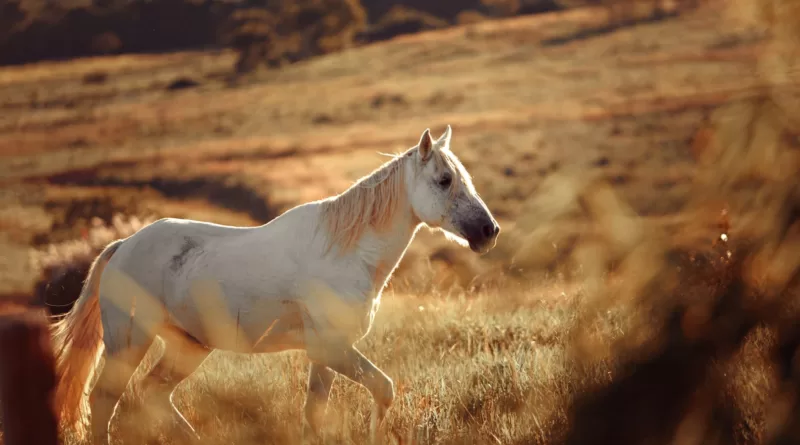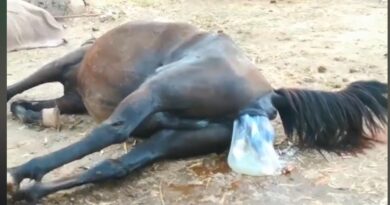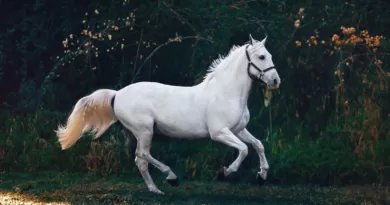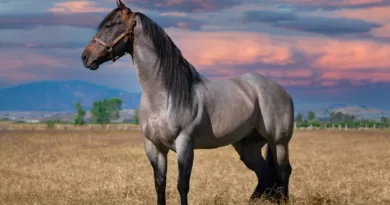How to Braid Horse Tail
Understanding the Basics of Horse Tail Braiding
When it comes to horse tail braiding, there are a few basic concepts that every equestrian should understand. First and foremost, it is important to have a strong foundation in horse handling and grooming before attempting to braid a tail. It is also essential to have a basic understanding of the different types of braids that can be created, as well as the tools and materials that are needed for the job.
One of the most important factors in horse tail braiding is ensuring that the horse’s tail is properly prepared beforehand. This includes thoroughly washing and conditioning the tail to remove any dirt or tangles. It is also crucial to comb through the tail with a wide-toothed comb to remove any knots or debris. By taking the time to properly prepare the horse’s tail, it will be easier to create a neat and professional-looking braid.
Preparing the Horse Tail for Braiding
To ensure a successful and professional-looking horse tail braid, it is crucial to properly prepare the horse tail beforehand. The first step in preparing the horse tail for braiding is to thoroughly clean it. Begin by gently brushing out any tangles or knots using a comb or a specialized horse grooming brush. This will not only make it easier to work with the tail, but it will also prevent any discomfort or pulling on the horse’s part during the braiding process.
Once the horse tail is free of tangles, it is important to ensure that it is free of excess moisture. Damp hair can be more prone to breakage, making it more difficult to achieve a neat and long-lasting braid. If the horse tail is wet, take the time to thoroughly dry it using a towel or a low-heat blow dryer. Additionally, applying a detangler or a leave-in conditioner can help make the horse tail more manageable and smooth, further aiding in the braiding process. By taking the time to properly prepare the horse tail, you will lay the foundation for a successful and beautifully braided outcome.
Choosing the Right Tools and Materials for Horse Tail Braiding
When it comes to horse tail braiding, having the right tools and materials is essential to achieve the desired results. There are a few key items that every horse owner or braider should have in their toolkit.
First and foremost, a good pair of scissors is a must-have tool. It is important to invest in a sharp, high-quality pair that will make clean and precise cuts. Dull scissors can lead to messy and uneven braids, which can be frustrating to both the braider and the horse. Additionally, having a comb or brush specifically designed for detangling horse tails is important to ensure that the hair is free from knots and tangles before starting the braiding process. This will help to create a smooth and neat braid.
Step-by-Step Instructions for Starting a Horse Tail Braid
To begin the process of braiding a horse tail, it is essential to gather the necessary tools and materials. First, ensure that you have a comb or brush to detangle and smooth out the tail. A wide-toothed comb is ideal for this purpose. Next, you will need a tail wrap or bandage to secure the braid once it is completed. It is also helpful to have a pair of sharp scissors handy to trim any excess hair. Lastly, have some water or hairspray available to dampen the tail, as this can make it easier to work with.
Once you have gathered all the required tools and materials, you can then proceed with the step-by-step process of starting a horse tail braid. Begin by thoroughly brushing or combing the tail to remove any tangles or knots. Hold the tail at the base, near the dock, and divide it into three equal sections. Hold the left section in your left hand, the middle section in your right hand, and leave the right section hanging loose. With your left hand, cross the left section over the middle section. Then, using your right hand, cross the right section over the middle section. Repeat this crossing motion, alternating between the left and right sections, until the braid is complete.
Different Types of Braids for Horse Tails
Two of the most popular types of braids for horse tails are the traditional three-strand braid and the French braid. The three-strand braid, also known as a plait, is a basic braid that is formed by intertwining three strands of hair. This type of braid is relatively easy to create and is commonly used for everyday riding or groundwork. On the other hand, the French braid is a more intricate and stylish option. It involves gradually adding sections of hair while braiding, creating a woven effect that starts at the base of the tail and extends all the way down. French braids are often used for formal occasions or shows, providing a sleek and elegant look to the horse’s tail.
Another popular type of braid for horse tails is the fishtail braid. This braid creates a visually appealing pattern that resembles the scales of a fish. Unlike the traditional three-strand braid, the fishtail braid is formed by dividing the tail hairs into two sections and crossing small sections from each side over to the other. This process is repeated until the braid is complete. Fishtail braids are commonly seen in dressage competitions, as they give the tail a sophisticated and polished appearance. They require a bit more time and effort to create than other braids, but the end result is well worth it.
Tips and Techniques for Achieving a Neat and Professional Braid
To achieve a neat and professional braid for your horse’s tail, it is crucial to pay attention to every detail. Start by thoroughly brushing and detangling the tail to ensure a smooth and knot-free base. This will make the braiding process much easier and result in a cleaner final look. It is also essential to have clean hands while braiding, as any dirt or oil on your fingers can transfer to the hair and make it messy.
When braiding, take small, even sections of hair to ensure uniformity throughout the braid. Pull each section tight as you go along, but be careful not to pull too hard and cause discomfort to the horse. If the horse becomes restless or unhappy during the braiding process, take a break and try again later when it is calm and relaxed. Remember to keep your movements smooth and steady to create a clean and professional finish.
Common Mistakes to Avoid While Braiding a Horse Tail
One common mistake to avoid while braiding a horse tail is pulling the hair too tightly. It might be tempting to create a super tight braid, thinking it will look neater and last longer. However, pulling the hair excessively can be uncomfortable and even painful for the horse. It can cause unnecessary stress and damage to the hair follicles, leading to breakage and thinning of the tail. To avoid this mistake, always be gentle when handling the horse’s tail and ensure the braid is secure but not overly tight.
Another mistake is not starting with a clean and detangled tail. Before attempting to braid, take the time to thoroughly wash and condition the horse’s tail. Use a gentle shampoo designed for horse hair and rinse well to remove any product residue. Afterwards, apply a good quality conditioner to keep the hair smooth and easy to work with. It’s also important to remove any tangles or knots using a wide-toothed comb or a specialized detangling tool. Starting with a clean and detangled tail will make the braiding process much easier and result in a more polished final look.
Adding Decorative Elements to Enhance the Braided Horse Tail
One way to make a braided horse tail stand out even more is by adding decorative elements. These elements can add a touch of flair and personality to the braid, making it truly unique. Some popular decorative elements include ribbons, beads, and flowers. Ribbons can be woven through the braid, giving it a pop of color, while beads can be threaded onto the tail hairs, creating a shimmering effect. Flowers can be attached to the base of the braid, creating a beautiful and natural-looking adornment. When choosing decorative elements, it is important to consider the horse’s comfort and safety. Make sure any additions are securely attached and do not cause any discomfort or irritation to the horse.
Another way to enhance a braided horse tail is by using different colors and textures. Instead of braiding the tail with just one color, you can incorporate multiple colors to create a stunning visual effect. This can be achieved by using colored yarn or thread to braid with, or by using different colored ribbons or beads. Additionally, you can experiment with different braid styles to create interesting textures. For example, a fishtail braid or a fanned-out braid can create a unique look that is sure to turn heads. By adding variety to the color and texture of the braid, you can create a visually appealing and eye-catching display.
Maintaining and Caring for a Braided Horse Tail
To keep a braided horse tail looking its best, proper maintenance and care are essential. One of the key aspects of maintaining a braided horse tail is ensuring that it stays clean. Regularly brush the tail to remove any dirt or debris, using a soft brush or comb to gently work through any tangles or knots. Avoid using harsh or abrasive tools, as these can damage the delicate braids. Additionally, it is important to keep the horse’s living conditions clean, as a dirty environment can quickly undo all the hard work put into braiding the tail.
In addition to keeping the tail clean, it is important to be mindful of the horse’s daily activities and movements. When turning the horse out to pasture, consider using a tail bag or wrap to protect the braided tail from being snagged or unravelled. This can help prolong the lifespan of the braid and prevent any unnecessary damage. When riding or exercising the horse, be cautious of anything that may catch or pull on the tail, such as low-hanging branches or loose straps on equipment. By being attentive to the horse’s surroundings and taking preventive measures, the braided tail can be preserved and maintained for longer periods of time.
Exploring Advanced Horse Tail Braiding Styles and Designs
In the world of horse tail braiding, there is a vast array of advanced styles and designs to discover. These intricate braids are not only visually stunning but also showcase the skill and creativity of the braider. One popular advanced style is the French braid, which involves weaving the hair into a tight and elaborate pattern. This style is often chosen for formal events or competitions, as it gives the horse tail a regal and elegant appearance. Another advanced design is the fishtail braid, characterized by its intricate and intertwining strands. This style adds a touch of flair and complexity to the horse tail, making it stand out in any setting. Horse owners and braiders can experiment with different techniques and combinations to create unique and captivating designs that truly reflect their individual style and artistic vision.
Aside from braiding techniques, there are also various decorative elements that can be incorporated into advanced horse tail braids. The addition of ribbons, beads, or flowers can enhance the overall look and make the braid even more eye-catching. The choice of decorations can be tailored to suit different occasions, such as using a patriotic theme for national events or incorporating the horse’s favorite colors for a personal touch. It’s important to remember that when adding decorative elements, they should be securely fastened to ensure they won’t become tangled or cause any discomfort to the horse. An alluring and well-maintained horse tail braid, coupled with thoughtful and tasteful decorations, will undoubtedly leave a lasting impression on all who see it.
What is horse tail braiding?
Horse tail braiding is a decorative technique used to style and manage a horse’s tail, creating various patterns and designs by weaving the hair together.
Why do people braid a horse’s tail?
Horse tail braiding serves multiple purposes, including keeping the tail clean and tangle-free, preventing hair breakage, and enhancing the horse’s appearance for shows or events.
What are the basic tools needed for horse tail braiding?
The basic tools for horse tail braiding include a comb or brush, tail bandages or wraps, a hoof pick or small comb for parting the hair, and rubber bands or thread for securing the braid.
How do I prepare a horse’s tail for braiding?
To prepare a horse’s tail for braiding, start by thoroughly cleaning and detangling the hair. Then, gently brush or comb out any knots or debris. Trim any split ends, if necessary, and ensure the tail is dry before beginning the braiding process.
How do I choose the right braid style for a horse’s tail?
The choice of braid style depends on various factors, including the horse’s breed, discipline, and personal preference. Popular braid styles for horse tails include a classic braid, French braid, running braid, fishtail braid, and button braid.
What are some tips for achieving a neat and professional braid?
To achieve a neat and professional braid, make sure to divide the hair evenly, maintain consistent tension while braiding, and secure the braid tightly at the end. Using a comb or brush to smooth the hair as you go and practicing good hand positioning can also help achieve a polished look.
What are common mistakes to avoid while braiding a horse’s tail?
Common mistakes to avoid while braiding a horse’s tail include pulling the hair too tightly, braiding unevenly, leaving gaps or loose sections, and using inappropriate tools or materials. It’s also important to avoid rushing the process and to be patient and gentle with the horse.
Can I add decorative elements to the braided horse tail?
Yes, you can add decorative elements to enhance the braided horse tail. Options include ribbons, flowers, beads, or yarn, which can be woven into the braid or attached at the base of the tail.
How do I maintain and care for a braided horse tail?
To maintain and care for a braided horse tail, avoid brushing or combing the braid too often, as it can cause frizz and loosen the style. Protect the braid by wrapping it in a tail bag or using tail bandages when the horse is turned out. Regularly inspect and repair any loose or damaged sections of the braid.
What are some advanced horse tail braiding styles and designs?
Advanced horse tail braiding styles and designs include intricate patterns, such as diamond braids, multiple strand braids, spiral braids, or the use of different colored ribbons or yarns. These styles require more skill and practice but can create stunning visual effects.




